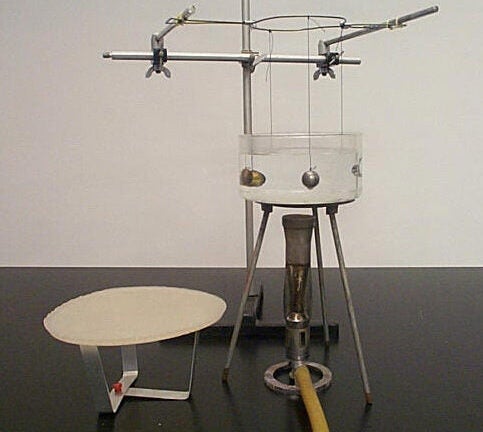H.4 – Specific Heat
This experiment demonstrates the concept of heat capacity. Five equal-mass metallic cylinders (aluminum, stainless steel, brass, copper and lead) are heated to 100°C in boiling water. They are quickly placed on the top side of a wax sheet placed on a hinged surface. As soon as the surface is raised to an almost vertical position the rods start melting their way down the wax. The total distance traveled down is proportional to the amount of wax melted and is a direct visual measure of the energy released by each rod and hence of the energy first absorbed when heated to 100°C. Therefore, the metal reaching the lowest position is the one with the highest heat capacity.
Note: it is important that the students realize that the distance traveled is not related to the size of the rods (which all have the same mass). That it appears to be so in this experiment is only due to the metals with the highest heat capacities also having the lowest densities.
